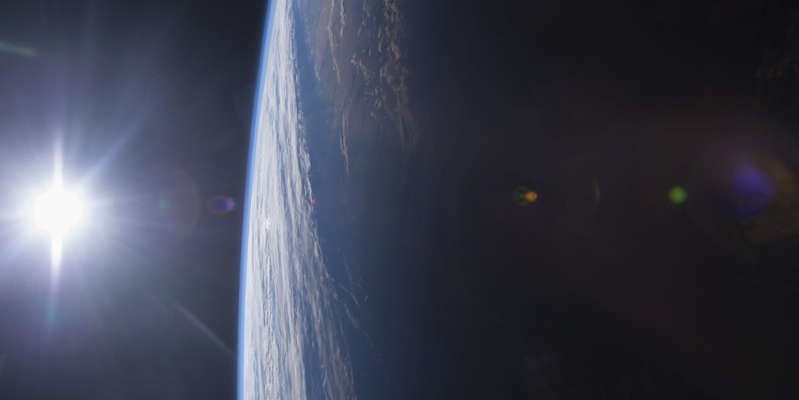
Slowing Earth's Rotation Causes Oxygen Catastrophe
Scientists from the University of Michigan (USA) have found out how oxygen appeared in the Earth's atmosphere. According to the study, this was due to a slowdown in the rotation of our planet, reports Nature Geoscience.
It is known that the early Earth rotated very quickly, and a day on it lasted only a few hours. But over time, the rotation speed began to decrease due to the gravitational influence of the moon.
Based on the analysis of fossils, 1.4 billion years ago, a day lasted 18 hours. 70 million years ago, they were half an hour shorter than they are now. Scientists have calculated that 1.8 milliseconds per century are added per day.
Scientists concluded that longer days influenced the life cycle of cyanobacteria – microorganisms that appeared on Earth 2.4 billion years ago. They received more sunlight and produced more oxygen as a similar metabolic product.
The researchers analyzed microbial mats found in Lake Huron. They are considered analogs of cyanobacteria, which caused the so-called oxygen catastrophe.
The analysis identified two types of microorganisms: purple cyanobacteria, which produce oxygen through photosynthesis, and white microbes, which metabolize sulfur. The former are active during the day, the latter at night.
Scientists noted that cyanobacteria begin to fully produce oxygen only a few hours after dawn. If the daylight hours are short, they will not have time to create enough gas.
The team conducted experiments and measurements on microbes both in their natural environment and in the laboratory. They also created a computer model that linked sunlight to the production of microbial oxygen.
The results showed that the increase in daylight hours is associated with both an oxygen catastrophe and another episode of atmospheric oxygen saturation in the Neoproterozoic era (550-800 million years ago).
“We tie together the laws of physics that operate on vastly different scales, from molecular diffusion to planetary mechanics. We show that there is a fundamental relationship between the length of the day and how much oxygen can be released by terrestrial microbes, ”the authors of the scientific paper noted.
Another study showed that early Earth was an entirely aquatic world. The land was hidden under the waters of the ocean.

